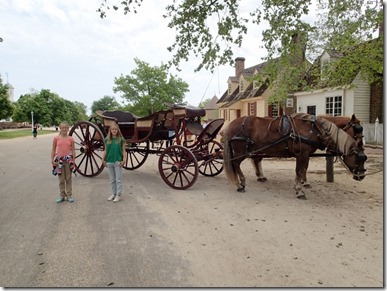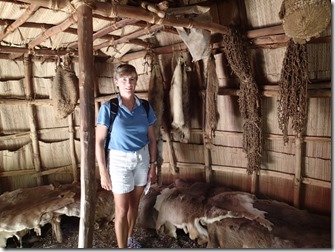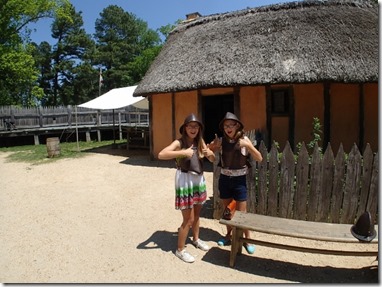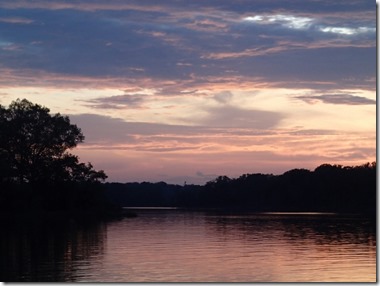Gloucester Point to Mill Creek, Maryland

Silhouette
Pieter, Pauline, Robyn and Kerry Lindeque
Fri 16 May 2014 14:10
|
38:20.1N 76:26.1W
Hello! In this blog, we visited Gloucester Point, the Piankatank River and
Anti-Poison Creek. Not only this, but we also visited Williamsburg and
Jamestown, which we got to by hiring a car and driving inland. There, we
travelled back in time, firstly to the 1600s, the time of the first settlers in
America, in Jamestown and then to 1770, to the very place where the Independence
War began, in Williamsburg.
We sailed to Gloucester Point on the 6th May, where we moored on the
hammerhead berth (the slip at the very end of the pontoon) in Yorkriver Yacht
Haven.
 What is this passing by our boat?
There we hired car and on the 7th we drove to Williamsburg. This
historical town has been converted to look like 1770. We got to see Thomas
Jefferson talk about the importance of Williamsburg, Virginia, as it was the
very beginning of the Independence War. As we walked down the streets we passed
carpenters, tailors and bookbinders. In the shops we saw the wares that would
have been sold there in 1770 and the artisans talked to us about how the created
these items using methods from the 1700s. It was especially fascinating to learn
that the bookbinder had in fact made books for the Queen of England and that
there were only 20 fellows in the Master Book Binders Guild, in the world (Of
which he was 1 of them.)! We had a traditional (and delicious) lunch in a tavern
and waved to horse drawn carriages as they passed. I had a great day, but there
was still more to come...
 Standing by a horse drawn carriage.
The next day we took the car to Jamestown, another town of historic
interest. However, this time it was converted to look like the 1600s, when the
first colonists from England arrived. After watching a short movie explaining
the journey of the colonists and looking at artefacts from the time period in a
museum, we headed to the towns. The first was an Indian settlement and if you’re a vegetarian, it would not be a nice
place to be! The huts where filled with fur and the beds, which were covered in
fur, was very comfy!
 Mum standing in an Indian hut.
We watched a man dressed in Indian gear cook food, a lady create needles
out of deer bones and another woman creating a basket. I even got a go at
grinding corn! Pretty much everything the Indians used was recycled. Take a deer, for example; the
hoofs would be used as glue, the meat as food, the skin as clothing and the
bones as knives and needles and sinew for thread! Next, we visited the English
settlement and it was very different. The houses looked like traditional Tudor
houses. We visited a church, watched a man fire a musket, tried on armour and
walked through a traditional English house.
 Kerry and I trying on armour.
It was very hot, unlike the Indian camp, which was under the shade of the
trees. Finally we visited the replicas of the English ships, that would have
taken colonists to America. They were very impressive!
After our 2 days of cramming history in our heads, we left Gloucester Point
and sailed to Piankatank River. After taking our dinghy up a little creek and
puncturing a hole in it on the rocks, we narrowly missed the 2 thunderstorms
that visited the bay. The next day we sailed to Anti-Poison Creek, so named
because, legend tells, that the Indians discovered an anti-poison to John
Smith’s sting ray wound (John Smith was the leader of the English colonists for
a long time and was famously saved by Pocahontas, who did not, despite what
Disney says, marry him. She married John Rolfe.).
 Sunset over Anti-Poison Creek
The next day we sailed to Mill Creek and managed to nab the best spot in
the anchorage! And then, on the 13th we crossed borders to the first of our
northern states, Maryland and went to another Mill Creek, but still no mill to
be seen in either of them.
Our next stop is Oxford, where we will spend longer than 1 day in, as we
have been doing for the past few days.
Goodbye!
Robyn
Our next stop will
|